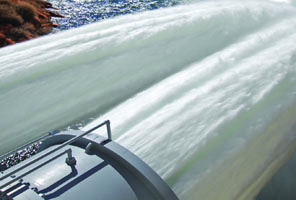November 19, 2012
via USGS Science Features on November 14, 2012
By Jack Schmidt and Barbara Wilcox
 More than 16 years of USGS science will come to fruition next week in the Grand Canyon and its surroundings when the U.S. Department of the Interior releases Colorado River water from Lake Powell reservoir under its new science-based protocol for adaptive management of Glen Canyon Dam.
More than 16 years of USGS science will come to fruition next week in the Grand Canyon and its surroundings when the U.S. Department of the Interior releases Colorado River water from Lake Powell reservoir under its new science-based protocol for adaptive management of Glen Canyon Dam.
The November 19 controlled release, called a high-flow experiment, simulates a natural small flood that might have occurred before the dam was completed in 1963. Scientists have shown that floods redistribute sand and mud, thereby creating sandbars that help maintain and restore camping beaches and create favorable conditions for nursery habitat for native fish, including the endangered humpback chub (Gila cypha) in Glen Canyon National Recreation Area, Grand Canyon National Park, and the Hualapai Indian Reservation. Newly created river deposits are also the substrate on which many components of the native ecosystem depend.
At noon Monday, November 19, the dam’s river outlet tubes will be opened. Typically, reservoir releases are routed through power-plant turbines and thereby produce hydroelectricity. However, the outlet tubes allow some reservoir water to bypass the power plant, thereby allowing for larger volumes of water to directly enter the river. Flow through these outlet tubes does not go through the turbines, and these waters do not produce hydroelectricity. The outlet tubes are only used in rare times of high inflow when additional water must be released from the reservoir, or when an environmental objective is served by creating a controlled flood.
Read more at USGS Science Features.

